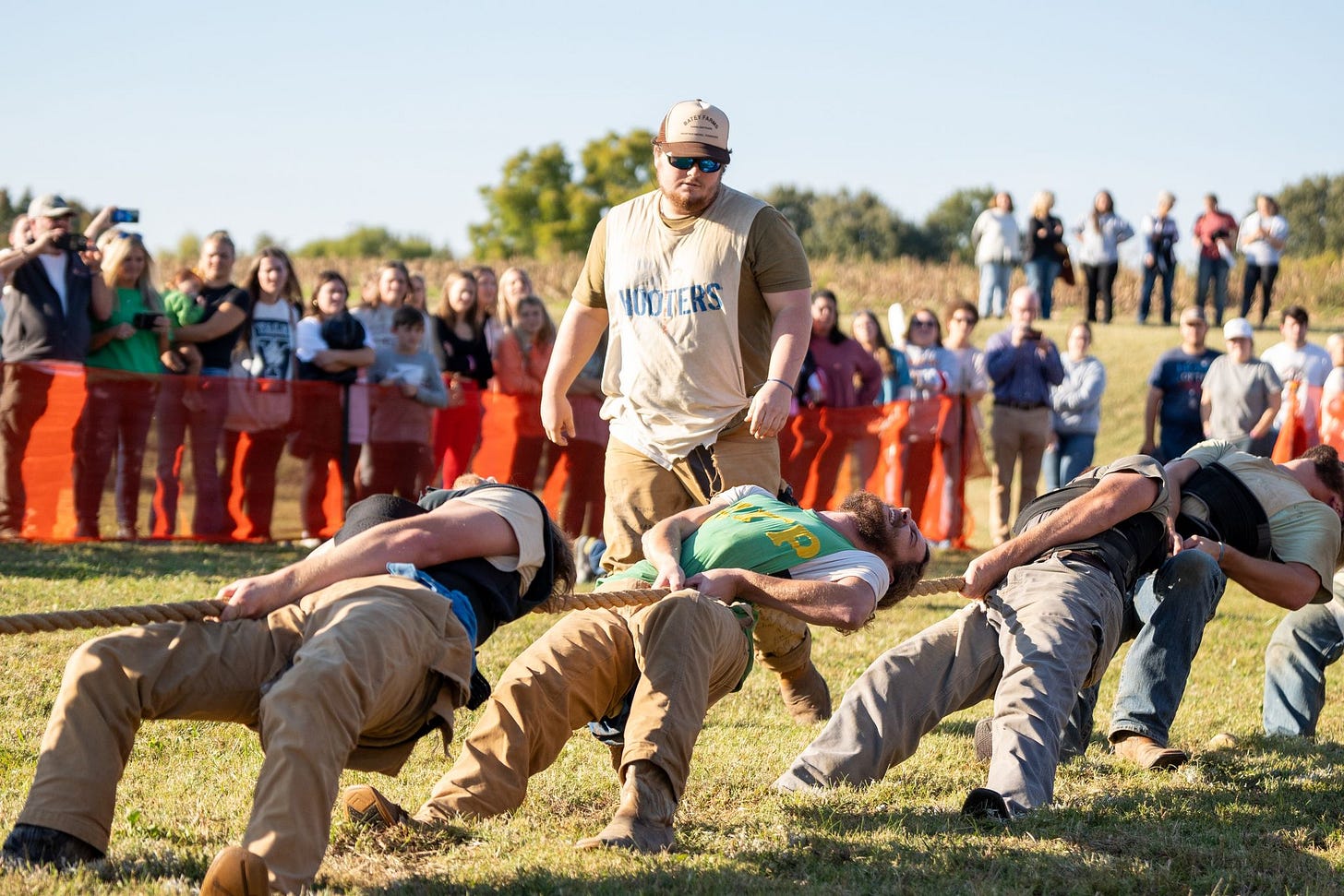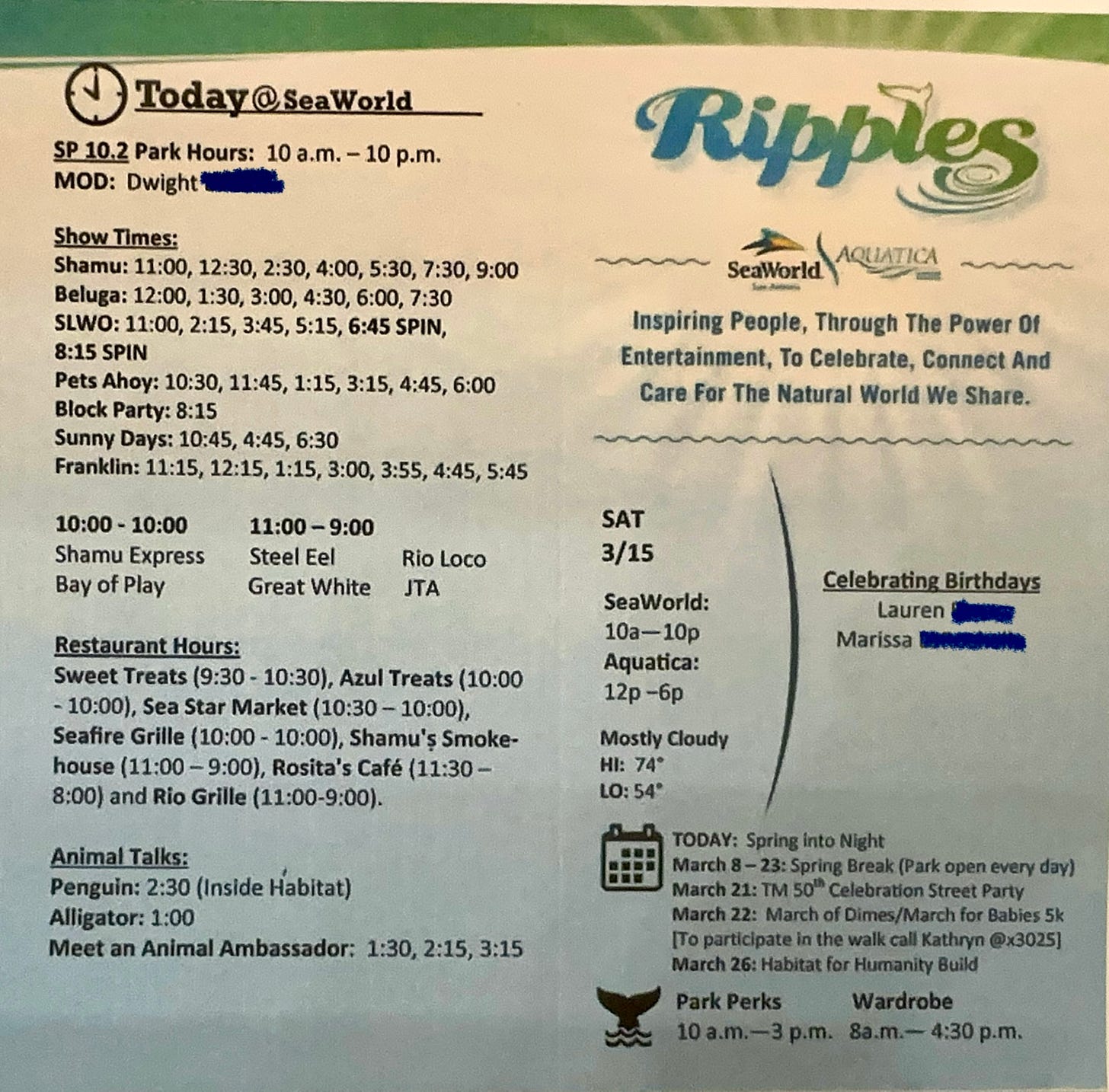Thriving Teams Need Clear, Compelling Targets
Teams are healthier and happier when they have clarity on the precise outcomes they are trying to achieve.

One team consistently wins first place in UT Martin's annual Rope Pull event - the brothers of Alpha Gamma Rho (AGR) fraternity. They absolutely dominate the men's bracket, and it's rare for AGR to lose a match. In fact, they've won the tournament every year since 2014.
Rope Pull is one of several events that's used to determine which organization receives UT Martin's Homecoming Participation Award. The more events that you win, the better your chances are for taking the top award. The organization that wins the homecoming prize gets a big boost of pride and campus popularity, but it also can inspire big donations from your alumni.
Most teams compete in Rope Pull to earn points toward winning the Homecoming Participation Award. But that's not why AGR competes. They have a more compelling objective.
First Things First: What's Your Target?
In this series on the 10 Threads of Thriving Teams, I'm highlighting similar attributes of winning teams that I've encountered in my career. I chose Targets as my first topic because I strongly believe that a teams are healthier and happier when they have clarity on the precise outcomes they are trying to achieve.
A Target is a compelling objective that is easily understood and ambitious, and I argue that Targets are the most defining elements of a team. Targets shape the decisions you make when forming the other Threads of Thriving Teams that I'll cover in this series.
Targets will determine what type of Talent you need to recruit to your team. The effort it takes to hit your Targets will dictate your most valuable resources: Time and Tools (aka resources, which includes money). Plus, you'll need the right Training to reach your Target, and the courage to continue, or Toughness, as you approach challenges along the way.
Most importantly, the Target should pull the whole team together. To attract that team and draw their full commitment, your Target must be appealing to others. It must inspire the team to show up and give their best. Moreover, the leader or coach must have an obsession-level, infectious desire to achieve it.
I spoke with Mike Johnson, an AGR alumnus who graduated from UT Martin in 1987. Mike lives a few miles from the university and has remained involved with the AGR chapter, occasionally attending their Rope Pull practices to offer encouragement. Mike motivates the team with wisdom earned from decades of experience with the event. He tells them, “get your head right, and your heart right, and the rope will follow. And I remind them that in any close contest, the team that wins is most always the one that wants it the most. Don’t let anybody want it more.” He shared with me that winning the tournament is important, but there's more at stake than a trophy.
Their Target is to protect and promote the strength of their brotherhood. They take winning seriously because it's more than a game; it's a means by which they demonstrate their excellence, character, and perseverance. They found an inspiring goal, and each year they fight like hell to achieve their objective.
In the framework for goal setting and progress reports called Objectives and Key Results (OKR), an objective is your target and the key results are the outcomes that show your progress to reaching the target. For the men of AGR, the objective that hangs in the balance is a strong brotherhood. The key result is a Rope Pull win.
While other teams are striving to touch the tape at the center of the rope to win the match, AGR is at war to defend the survival of a culture they’ve worked hard to earn.
Make Targets Clear
My first experience with using OKRs was at CapMetro, the public transit authority for the Austin, Texas metro area. In 2018, I had the privilege of helping shape two new company-wide objectives set by a new President and CEO, Randy Clarke. Randy wanted CapMetro to win the top transit agency of the year, which is a national industry award. The second objective was even bigger: develop a system expansion plan that voters would approve to fund through their property taxes. That plan was estimated at $7.1 billion - the single largest investment in public infrastructure in Austin’s history.
I helped Randy craft these goals into simple statements that our staff could remember and recite. My communications team put the statements on large banners that were hung in each of the company's buildings across the city. We put these goals into each staff newsletter and included them in the talking points that Randy used for staff meetings. We incorporated these into objectives into our executives' annual performance goals, which cascaded through the organization so that everyone was connected and contributing to these targets.
Along the way to these objectives, the agency achieved amazing key results. We grew ridership for 18 months straight, a streak that was disrupted in March 2020 when the Covid-19 virus swept through the city. As devastating as the pandemic was for our city and our nation, public transit was one of the few operations that didn't miss a beat. CapMetro's Net Promoter Scores rose higher than ever because of our customer’s appreciation for our brave and tireless staff who provided essential trips for frontline workers.
The community gave its support to CapMetro in November 2020 to fund the transit expansion plan. This objective took two years and thousands of labor hours to achieve, but the outcome will be a system expansion with new train and bus lines that will serve communities for generations. The company continues its efforts to be named the nation's best transit agency, which remains a compelling and inspiring goal for staff.

Make Targets Compelling
My wife Kendall and I worked at the Memphis Zoo for more than five years. We started our careers at the zoo only a few weeks apart in 2003. I worked on the marketing and communications team, but she had the more exciting job as a zookeeper. Kendall cared for all sorts of animals, from giant pandas and jaguars to polar bears and white-naped cranes.
Zookeepers also have an inspiring objective. Their annual plans may include things like renovating an animal's exhibit or creating a new educational opportunity for guests, but that's not what gets them out of bed before dawn each day. They are motivated by the strong bond they create with their animals, and they are energized by the role they play in educating guests and inspiring them to care about conservation. It's a pursuit that's bigger than themselves. Zookeepers realize they have a generational impact for wildlife management inside and outside the zoo.

A Lack of Clarity Leads to Languish
When I was working for SeaWorld as a Communications Director for their San Antonio location, we regularly distributed staff surveys to understand how park leadership could improve employee satisfaction. In 2012, we heard loud and clear that staff couldn't trace back their work to the strategic objectives of the park. What's more, they weren't clear on what those strategic objectives were.
I had failed to share the bigger picture of the park's goals with my managers and their direct reports, which left them frustrated and disengaged. My teams experienced more turnover that year than any other year since I started managing the team.
The park president, the VP of human resources, and I collaborated on a new communications matrix structure to ensure that messages were flowing through the organization. We outlined how messages would be filtered through in-person meetings, e-mails, and daily operation bulletins. On any given day during the summer, we were issuing communications to more than 2,000 staff members through standup meetings, PA announcements, and TV screens in break areas. It was imperative that we kept our frontline team engaged as they had the most influence over the guest/customer experience.

We created intentional overlap in the structure so that messages were heard more than once and weren't bottlenecked by a single layer of management in the organization. The new model for communication helped to improve our employee engagement scores. I still have a copy of that communications matrix near my desk to remind me of the importance of a multi-layered internal communication plan.
If your frontline doesn’t know the Targets and understand how they help the organization achieve them, you’ll be frustrated with performance and they’ll be out the door.
Looking Ahead
My primary goal in this series is to inspire others to identify and improve the attributes that make teams perform better and win more often. This is my Target, my objective.
So, how do you achieve Targets? Simply put, you start with a plan. If the Target is the center thread of the Teamwork rope, then the 9 topics I'll cover next are the supporting elements that give that rope, or team, the strength to complete its purpose.
Next, I'll focus on building Trust. Pack your compass and your bug spray, and get ready to sing kumbaya. Let’s learn about Trust with a trip to summer camp.
Key Takeaways
The Target is the most defining element of your team. It will affect the way you direct your resources, who you recruit, and your overall culture.
Great Targets are compelling. They ignite and sustain passion and commitment from both you and your team.
The entire team must understand the Target and how they contribute to achieving it.
The team that wins is most always the one that wants it the most. Don’t let anybody want it more.
You and your team will struggle with Targets that are not clear or compelling, which can damage team morale and lead to staff turnover.
The value of high quality internal communications cannot be overstated.
Post your Targets for staff to see on a regular basis. If you’re REALLY gutsy, post your Targets for your customers to see, too.




